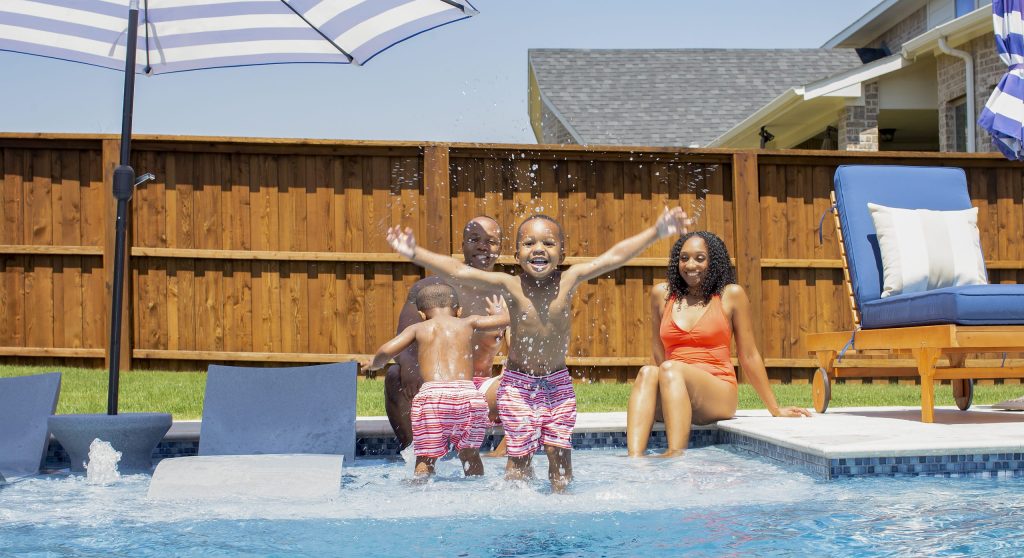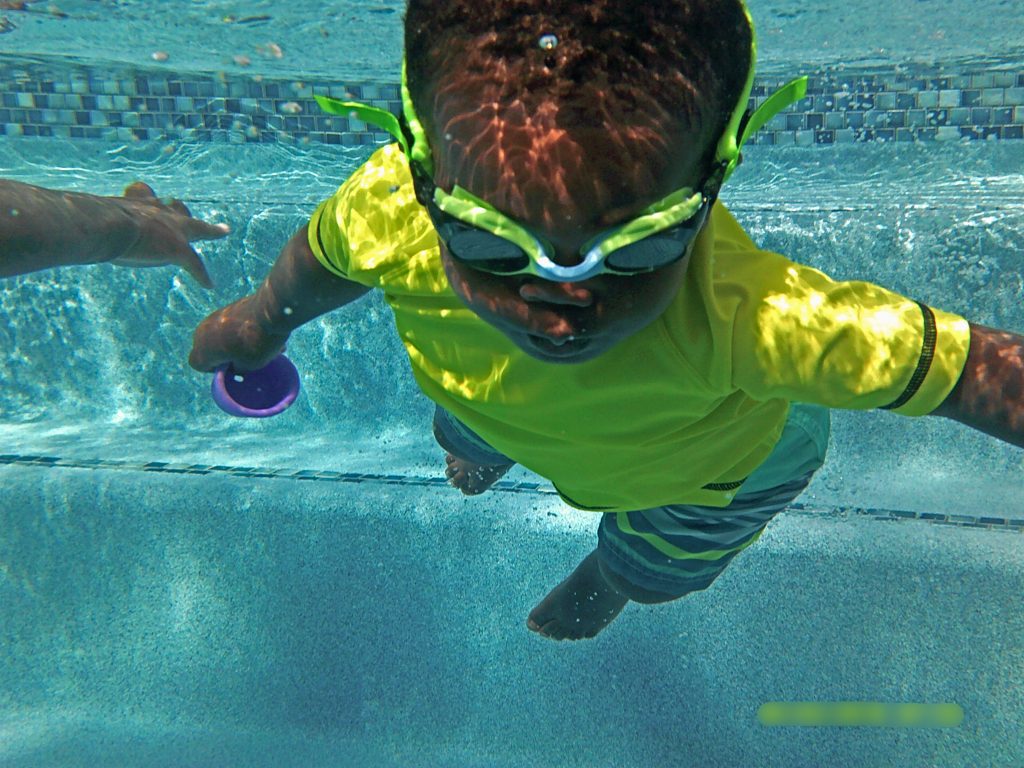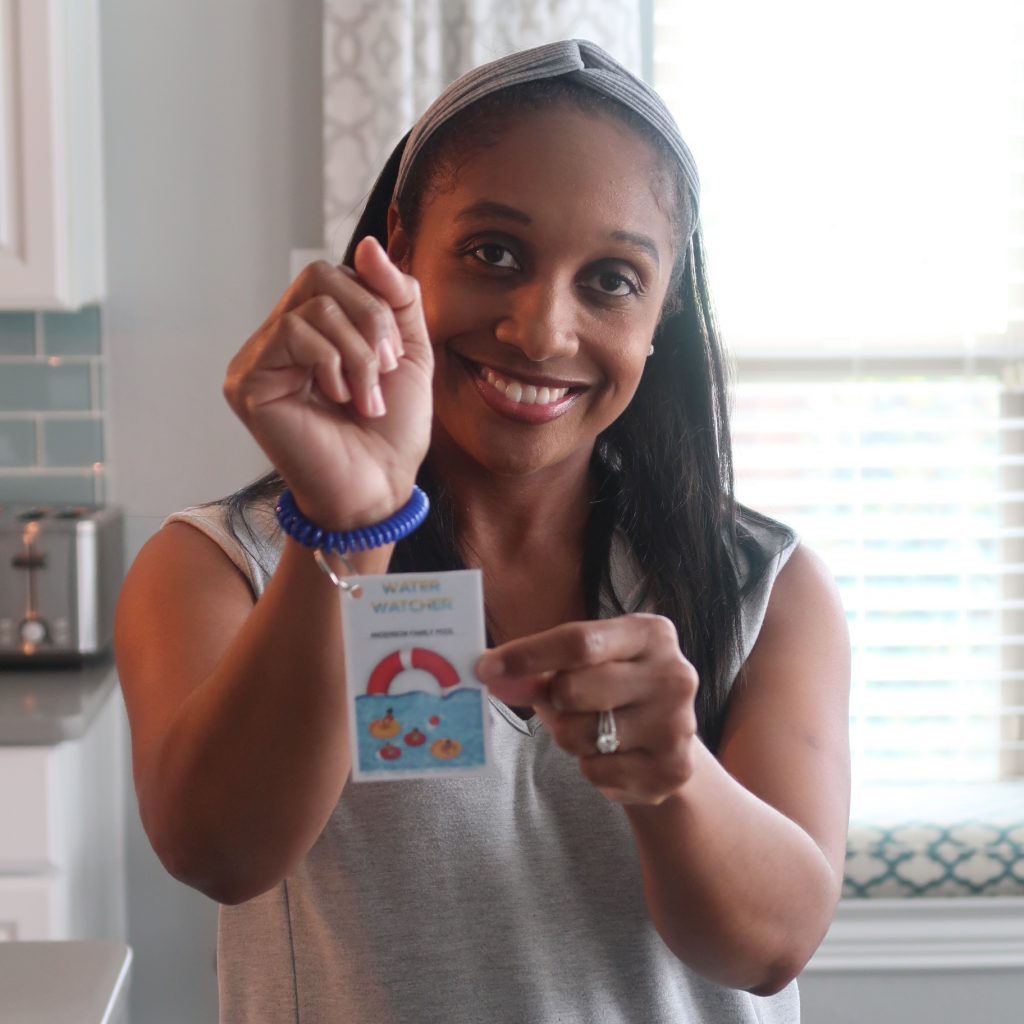
With July temperatures keeping us so hot we feel like we’re melting, many of us are turning to pools, lakes, and beaches whenever possible to keep the kids busy and allow everyone to cool off.
While we all strive to keep our children safe, sadly, there is a surge in childhood drownings during June and July, according to a new study by Merianne Spencer on childhood drownings in the U.S.
Here are five safety tips to help keep your kids safe in and near the water:
1. Keep children in bright colors so that they are easy to spot.
I’ll be the first to admit I prefer muted tones and tend to gravitate toward them for myself and my children’s clothes. However, when it comes to swimming, the brighter and louder, the better. Keep kids in bright rash guards and brightly colored swimsuits. This makes them significantly easier to spot in both pools and natural bodies of water. Darker colors or shades of blue and green tend to blend in with the water, making it harder to notice children under duress.

2. Use water watcher tags when near water.

Many drownings occur because there is an assumption that someone else is watching a child, i.e., a spouse or other family member. Water Watcher tags allow you to specifically define who is responsible for supervising a child when they are in or near a body of water.
My husband and I often take turns wearing the tag. We wear it on our wrists and don’t leave our children until the other person has “switched” with us and put on the tag. You can often find these tags free at your local fire station or hospital. Editor’s Note: We found free tags on lanyards in the waiting room at our pediatrician’s office.
You can also make your own! Here’s a template you can print at home and laminate, so it’s water-friendly: Water Watcher Tag Template. You can attach your tags with these spiral wrist coil key chains.

3. Use Coast Guard-approved life vests for natural bodies of water.
This is another one where I say “the brighter, the better” with color. Often, I’ve seen people at the beach or near the lake with floaties or floatie-type swim devices. Ensuring your child has on a Coast Guard-approved life vest will keep them safer if they fall off a boat at the lake or get pulled under by a current at the beach. Small children, especially, can significantly benefit from wearing life vests while playing at the beach.
Even if your child is a proficient swimmer, natural bodies of water can have pretty strong currents capable of knocking down both children and adults. My favorite Coast Guard-approved life vests are from Hyper-Lite, and Costco usually has a great deal on them in the summer. I try to find colors like bright orange or red for visibility.
4. If possible, avoid large floats in the pool when more than 4 – 5 children are swimming.
We have a rule in our home: If there are more than four children in the pool, or if we are having a pool party with lots of children, we do not allow large float devices like inflatables or large pool noodles in the pool. This is because they tend to obstruct the view of children in the pool, and it can be hard to see if a child has been trapped under an inflatable.
The more inflatables you have in the pool, the more it obstructs clear views of those swimming and splashing around it. I keep a lot of small water toys from Dollar Tree handy and encourage children to use those instead of the larger floats.
5. Enroll your child in swim lessons and practice floating regularly.
Of course, this may seem like the most obvious one, and while it does not necessarily prevent accidents in the water, swim lessons are a great way to teach your children about water safety and help them learn to respect the water. There are a variety of swim schools and private instructors in the Collin County area that can help your child feel comfortable and confident in the water while teaching them the life-saving skills of floating and swimming.

Since we have a pool at home and my boys are relatively young, I started them with ISR infant swimming classes so they could learn to float before age two. It’s never too early or too late to begin swim lessons. However, if you can start early, it really helps children overcome fears and respect bodies of water at an early age.
I ask my kids to float for several seconds every time they get in the pool. This is mainly for muscle memory — they spend most of the time splashing and playing around the steps and jumping in and out of the water, and they can start to forget the basics of floating. Floating on their backs is a life-saving technique, and if they are ever caught in a precarious situation, knowing how to float may save their life until help arrives.
Frisco Swim Resources for Every Age
Infant to Age Six
Infant Swimming Resource (ISR)
Visit the national website at the link above to find a local ISR instructor. Classes are geared towards infants to six-year-olds.
Your Swimming Baby
Instructor Sara Brull is my personal favorite. She taught both of my boys how to swim proficiently and float successfully on their backs before the age of two. She is a local mother in Frisco with four children of her own. She knows how to calm even the most nervous of children in a loving and nurturing way to help them become more confident in the water.
Ages Six & Up
Frisco Swim School
This is another local favorite of mine. The class sizes are small with no more than two to three children at a time, and the attentive instructors not only teach your child to swim, but also help advance those skills and take them to the next level — like learning the four basic swim strokes. Frisco Swim School is conveniently indoors and open year-round.
Lastly, if you are in need of financial support for swim school, organizations like the Hope Floats Foundation offer scholarships to provide swim lessons at local swim schools in Collin County. Visit its website to learn more.














Water Safety is literally life saving. I am saving this post. Thanks for this information
I couldn’t agree more! Thanks so much for reading!
Thank you for this informative post. Water safety is so important for the little ones..the water watcher idea is amazing!!
Thank you!
Love these water safety suggestions, especially the water watch tags.
Thank you! They have definitely been useful to our family and friends when they come to swim 🙂
I should have checked costco for an approved swim vest! Thanks for the tips
Absolutely! they are great and last a long time too! We are going on our second summer of using ours and have at least 1-2 summers left before the kids outgrow them!
Very informative and Great tips!
Thank you so much! I hope its helpful! 🙂
Great tips! We really have to many floaties and this was a great reminder for this! Perfect timing for this message. Thanks for this informative read, Very Helpful!
Thank you! The float thing was something I didn’t even discover until it happened to us the first time we had a lot of company over!
Great tips! I was not aware of the water watcher tag and will be looking into this.
Absolutely! I know the local fire dept in Prosper has some, or feel free to use the free printable option I shared. It definitely helps keep communication clear 🙂
This is great information and I couldn’t agree more. Thank you for sharing
Thank you so much Marilyn!
Two things:
Swim one hour after you have eaten.
By the ocean beware of rip tides! They sneak up on you and before you know it your far away from shore.
Thank you so much Linda! You are absolutely right about both! Especially the rip tides, that’s why its so important for young children especially to wear coast guard approved life jackets near the ocean and other natural bodies of water.
Great suggestions for playing it safe while I’m the water. I love the recommendation to have your children regularly practice floating! You want them to practice so much that it’s second nature in the event of an emergency which reduces panic.